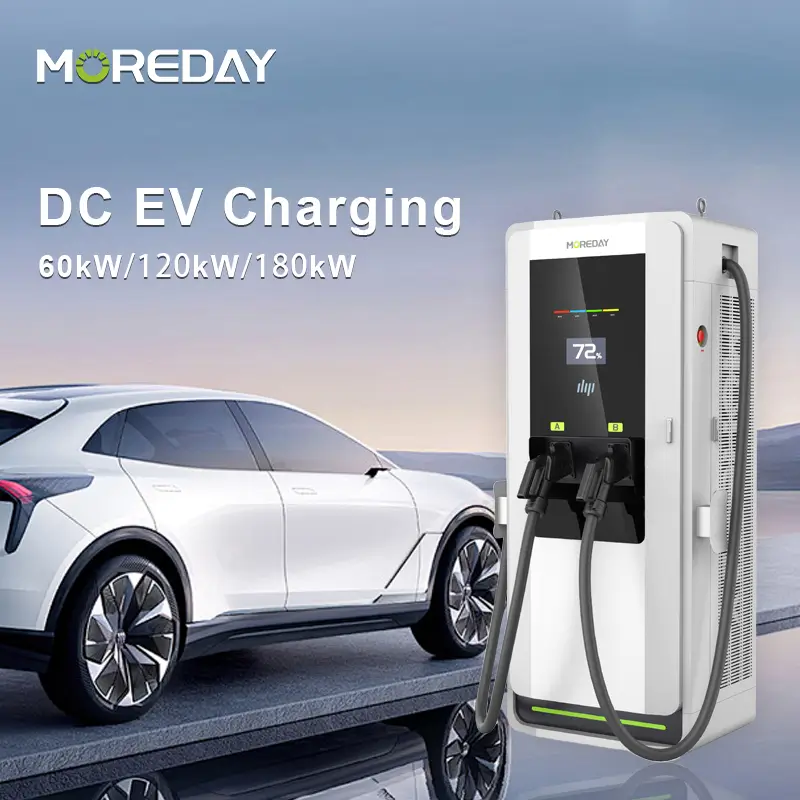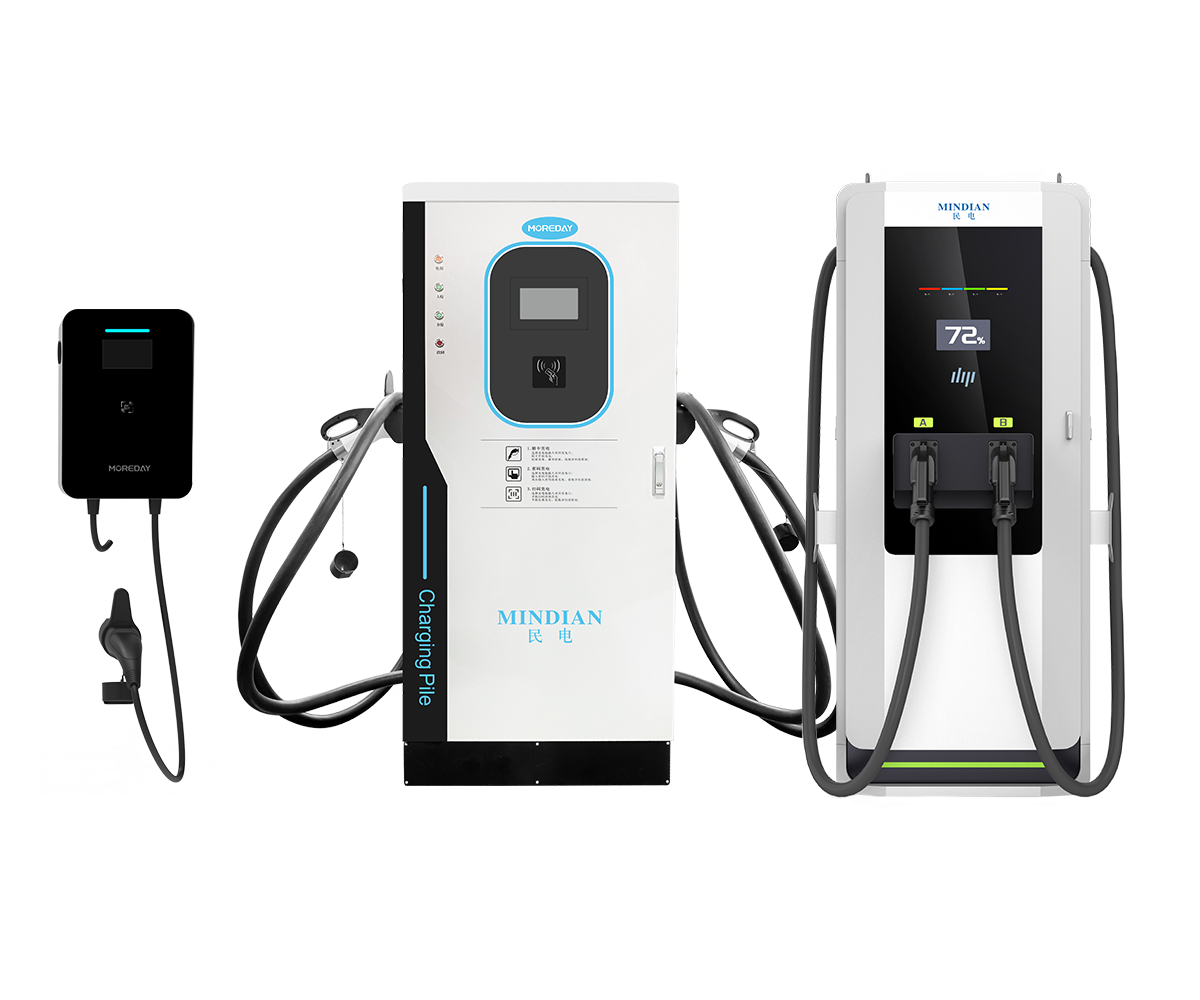The popularity of electric vehicles (EVs) is skyrocketing. In the first quarter of 2024, U.S. electric vehicle (EV) sales reached 267,808 units, a 4.2% increase from the previous year.
However, understanding the different charging options for EV owners. This blog will compare EV home charging and public charging to help readers make an informed decision.
Explore the differences between electric vehicle home charging and electric vehicle public charging.
| Feature | Home EV Charging | Public EV Charging |
| Cost | Reduces upfront costs, potential tax incentives | No upfront fees, but higher ongoing costs |
| Accessibility | Depends on home infrastructure | Widely available in urban areas |
| Charging Speed | Slower than public options | Offers faster charging options |
| Convenience | Charge at home, avoid travel | Supports long-distance travel |
| Maintenance | Minimal maintenance required | Maintained by provider |
What is EV home charging?

Electric vehicle home charging refers to the installation of electric vehicle charging equipment in a residential area that allows the owner to charge their electric vehicle from the convenience of their home. This type of EV charging usually involves the installation of a dedicated charging station, also known as an Electric Vehicle Supply Equipment (EVSE), which can safely and quickly power an electric vehicle.
Home charging equipment is usually connected to the home’s mains supply and may need to be professionally installed to ensure safety and compatibility. This is very convenient and cost-effective compared to public charging stations.
Types of home charging stations
Home charging stations mainly include Level 1 and Level 2 charging.
1. Level 1 chargers
A Level 1 charger is a basic device that provides slow-speed charging for electric vehicles, usually using a standard household electrical outlet (120 volts in the United States). This type of charger is designed to charge an electric vehicle during overnight stays at home or during extended periods of parking at the workplace.
Level 1 chargers charge at a slower rate, typically providing about 2 to 5 miles of driving range per hour of charge, and are suited for vehicle owners with nighttime charging or lower daily mileage needs. Level 2 chargers are designed to charge an electric vehicle at night or during extended periods of parking at the workplace.
2. Level 2 Chargers
A Level 2 charger is a medium-speed charging device for electric vehicles that requires the use of a high-power 240-volt outlet, similar to those used for large household appliances such as dryers.
These chargers can dramatically increase the speed of charging, adding 10 to 60 miles per hour to an electric vehicle’s range for those who need a faster charge. Installation of a Level 2 charger typically needs to be performed by a certified electrician to ensure safety and electrical code compliance.
Home charging stations: pros and cons
1. Pros of home charging stations
Convenience: Allows vehicle owners to charge at home without having to search for a public charging station.
Cost Effectiveness: Home charging is typically less expensive, especially during low-peak electricity times.
Charging speed: Home charging stations can offer faster-charging speeds compared to public slow charging stations.
Increased property values: installing a home charging station may increase property attractiveness and market value.
Environmentally Friendly: Making electric vehicles more convenient to use supports environmental protection.
Federal Tax Credits: Up to $1,000 or 30% of the installation cost, whichever is less.
Local Discounts: Additional incentives are available from states, municipalities, and utility programs.
2. Cons of Home Charging
Initial Installation Cost: The initial installation cost of home charging can be high. Level 2 charging stations cost between $1,000 and $3,000. Professional installation and upgrades to the home electrical system may be required, which adds to the cost.
Charging Speed Limitations: Home charging is typically slower than public charging stations. Level 1 chargers can only add 2 to 5 miles per hour. Level 2 chargers offer faster speeds and can add 10 to 60 miles of range per hour.
What is EV public charging?

Electric vehicle public charging refers to charging facilities that are set up in public areas or commercial locations for use by electric vehicle owners. These charging stations may offer different levels of charging services, including fast charging and slow charging, to suit different needs. Public charging stations enable EV owners to conveniently charge their vehicles while out and about, especially during long trips or daily commutes.
Types of public charging stations
1. Level 2 chargers
A Level 2 charger is a medium-speed electric vehicle charging device that runs on a 240-volt system. This type of charger typically adds 10 to 20 miles of range per hour to an electric vehicle and is a common method of charging in public parking lots and workplaces. This allows owners to conveniently charge their vehicles while at work or performing other activities.
2. DC Fast Chargers
A DC fast charger is a device that uses direct current (DC) for fast charging, typically adding 60 to 80 miles of range to an electric vehicle in less than 30 minutes. Designed to support EVs on long trips or for quick charging needs, these chargers are often installed on major transportation routes and in high-traffic areas to allow owners to quickly replenish their batteries during a trip.
public charging stations: pros and cons
1. Pros of public charging stations
Convenience: enables EV owners to charge conveniently while out and about, especially on long trips.
Increases the utility of EVs: Increases the acceptance and use of EVs as drivers can travel longer distances without worrying about running out of power.
Support the environment: Encourage more people to choose electric vehicles, thereby reducing dependence on fossil fuels and vehicle emissions.
Economic benefits: for commercial locations such as shopping centers and restaurants, installing charging stations can entice customers to stay longer.
2. Cons of public charging facilities
Uneven distribution of charging stations: While there are more charging stations in urban areas, public charging facilities may be very sparse in rural or remote areas, limiting the range and convenience of EVs.
Waiting in line: In areas or times of high charging demand, users may need to wait in line for charging, which adds to the inconvenience of use.
EV home charging vs public charging

When you are considering the choice of home charging versus public charging, please carefully compare its cost and convenience to facilitate yet make the best choice.
1. Cost analysis
The cost of installing a home charging station includes the purchase of a Level 2 charging station ranging from $1,000 to $3,000, and possibly additional circuit board upgrades. Federal tax credits and local rebates can help mitigate these initial expenses. The installation process needs to be completed by a professional electrician to ensure safety and compliance with local regulations. Home charging costs about $0.04 per mile and has low maintenance needs, requiring only periodic inspections and occasional minor repairs.
The construction of public charging infrastructure is funded by the government and private companies, and users pay for the actual amount of electricity they use. While public charging eliminates the initial investment in a personal device, it is typically more expensive to use. For example, Level 2 public charging stations cost $0.20 to $0.25 per kWh, and DC fast charging stations cost $0.40 to $0.60 per kWh. The overall cost is higher than for home charging, even though subscription services offer discounts to regular customers. Maintenance of public charging stations is the responsibility of the operator, and subscribers are not liable for maintenance fees, although equipment failure can be an inconvenience.
2. Convenience
Home charging offers great convenience for EV owners, with about 80% of charging activity done at home, the ability to charge at night or during off-peak hours, and the assurance that the vehicle will start on a full charge every day. However, some homes, especially apartments and condominiums, lack the necessary infrastructure to install home chargers, limiting access for some vehicle owners.
On the other hand, public charging stations, which are mainly located in city centers, shopping centers, and around highways, provide important support to vehicle owners who drive long distances and are unable to charge at home. Despite the increase in public charging facilities, there is a clear imbalance in distribution between cities and villages, and access is often inconvenient due to faulty equipment or damaged chargers.
3. Charging speed
The speed of home charging depends on the type of charger; Level 1 chargers use 120-volt household outlets and charge slowly, adding two to five miles of range per hour, making them ideal for nighttime charging or for vehicles that are driven less frequently each day. In contrast, Level 2 chargers require a 240-volt outlet and charge faster, adding 10 to 60 miles per hour, making them more suitable for daily use.
Public charging stations offer charging options at different speeds to accommodate a variety of needs. level 2 public chargers use a 240-volt system to charge 10 to 20 miles per hour and are typically set up in public parking lots and workplaces. DC fast chargers are capable of quickly charging in 20 minutes, adding 60 to 80 miles of range, and are primarily placed on major travel routes and in high-traffic areas for long-distance driving.
Conclusion
Electric vehicle charging methods- home charging or public charging- are dependent on the local power grid, and their environmental impact depends on the grid’s energy mix. With technological advances, home charging is moving towards intelligence, providing more dispatching and remote monitoring capabilities. At the same time, public charging networks are expanding rapidly, with significant investment from governments and the private sector.
When choosing between home charging and public charging, vehicle owners should make an appropriate choice based on their driving needs, economic considerations, and convenience. Home charging has a higher initial investment but lower long-term costs, while public charging offers faster charging speeds and convenience for long-distance driving, but has higher ongoing costs.
What can MOREDAY offer us?
MOREDAY offers a range of electric vehicle chargers including portable AC chargers, and wall-mounted chargers. They also offer high-power DC chargers for faster charging requirements. All of their products are available for retail and wholesale purchase, so please contact us for a quote!
Related reading: How often should I charge my EV to 100%


